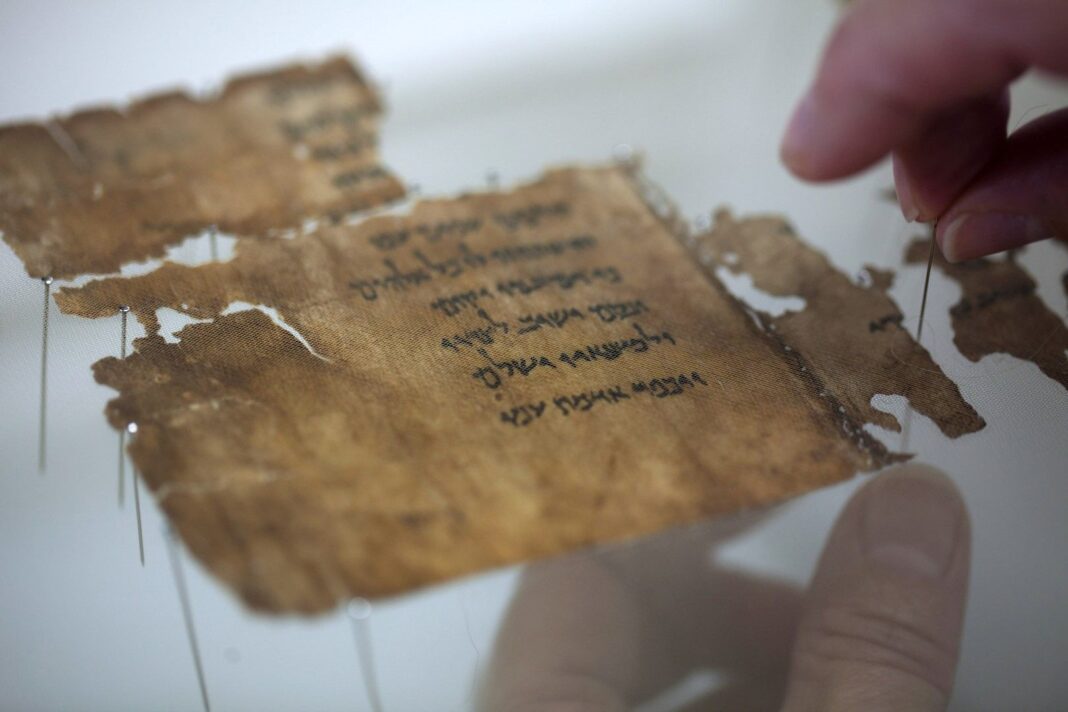The theologian-historian turned to modern tools of analysis.
A new method of handwriting analysis, developed by researchers at the University of Groningen, has suggested who wrote the Dead Sea Scrolls. Testing of the machine learning tool on one of the most famous ancient scrolls reveals that not one, but two scribes are behind the creation of the ancient text, technews.bg reports.
The Dead Sea Scrolls, a so-called set of 981 different texts, were discovered in 1946-1956 near the ancient Palestinian village of Qumran. The texts created between the 3rd century BC. and I century, are of great importance for history, religion and linguistics, as they contain the third oldest surviving manuscript of the Old Testament.
Known as the Great Scroll of Isaiah, it was among the first Dead Sea Scrolls discovered in 1946. It is one of the largest and best-preserved scrolls of all, representing the oldest complete copy of the Book of Isaiah.
Exactly how many scribes wrote this text, as well as the other Dead Sea Scrolls, has been the subject of heated debate in religious and academic circles. To try to find the answer, Mladen Popovic, a theologian-historian, turned to modern tools of analysis – artificial intelligence.
Popovich chose Isaiah’s Great Scroll for his team’s first assignment because it was impressively finished, covering 17 sheets of parchment, NewAtlas reports. This particular scroll has a relatively identical handwriting, which means that it is the work of a single scribe, although a number of scholars have suggested that it may have been the work of at least two scribes who had a similar handwriting and writing style.
To determine how many hands wrote the scroll, the researchers grouped the use of the Hebrew letter “aleph.” The single letter appears more than 5,000 times in the Great Scroll of Isaiah. Popovich suggests that human eyes are limited in their ability to notice small differences in handwriting styles.
Using several recognition techniques, the study revealed changes in handwriting patterns beginning in the middle of the manuscript. In the past, some scholars have suggested that the Great Scroll of Isaiah was the work of two separate scribes – this new evidence confirms the theory.
“We can now confirm this with a quantitative handwriting analysis, as well as with strong statistical analyzes,” Popovic explained. “Instead of relying on judging more or less impressionistic evidence, with intelligent computer assistance, we can prove that there is a statistically significant difference.”
In a new study published in the journal PLOS One, Popovic and his team confirmed that the writing was the work of two people. The significant similarities in handwriting between the two scribes on the Great Scroll of Isaiah point to interesting ideas about how the Dead Sea Scrolls came into being.
The fact that two different scribes contributed to the same manuscript with a seemingly similar handwriting probably suggests the same school or family environment behind the creation of the scrolls.
The similarity in the handwriting of the different scribes may indicate that they studied in the same school, with the same teacher. Or they may have been close “in another social way,” such as in a family context, such as being brothers or father and son, the researchers said.
The applied handwriting analysis technique demonstrated in the study offers scientists entirely new ways to study ancient manuscripts. Further work may focus on examining more of the Dead Sea Scrolls and build on this finding to shed light on who wrote the documents.
“This is very exciting because it opens a new window to the ancient world, which can reveal much more complex connections between the scribes who created the scrolls,” Popovic said. “In our study, we found evidence of a very similar writing style shared by the two scribes of the Great Scrolls of Isaiah, suggesting common training or origins. Our next step is to explore other scrolls where we can find different origins or scribes’ training.” .









